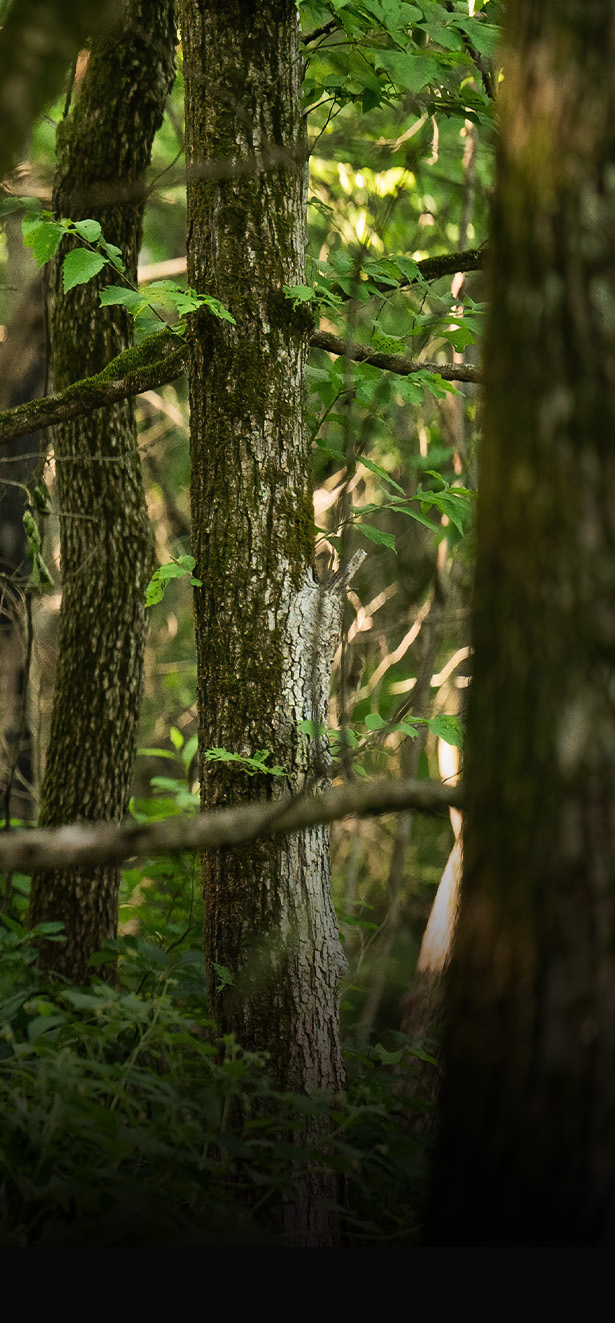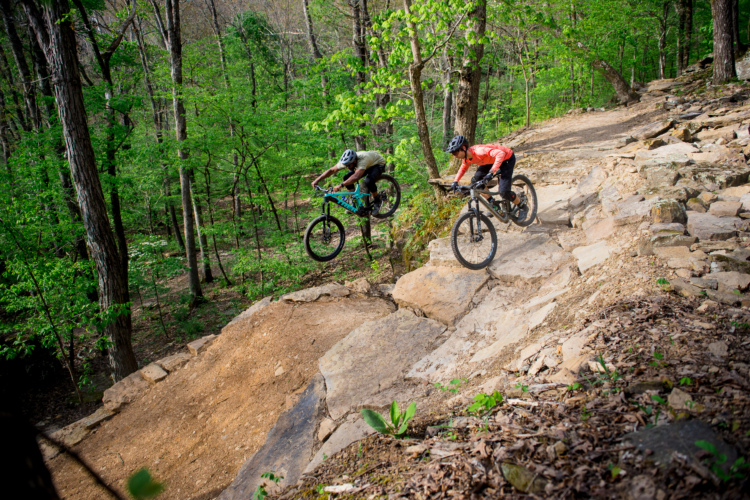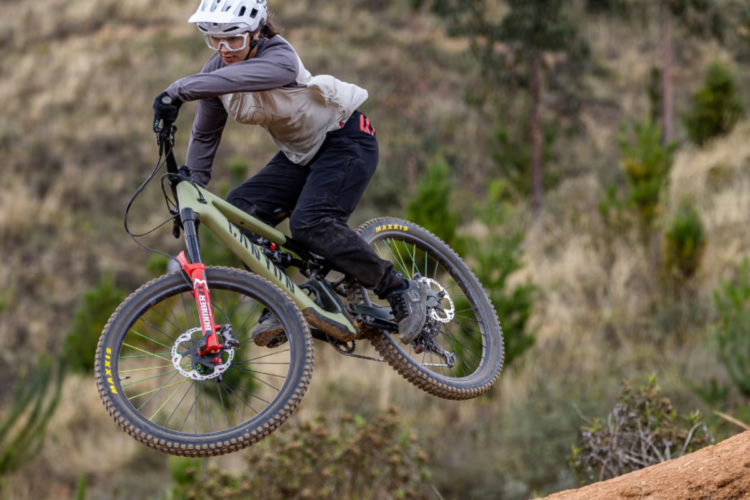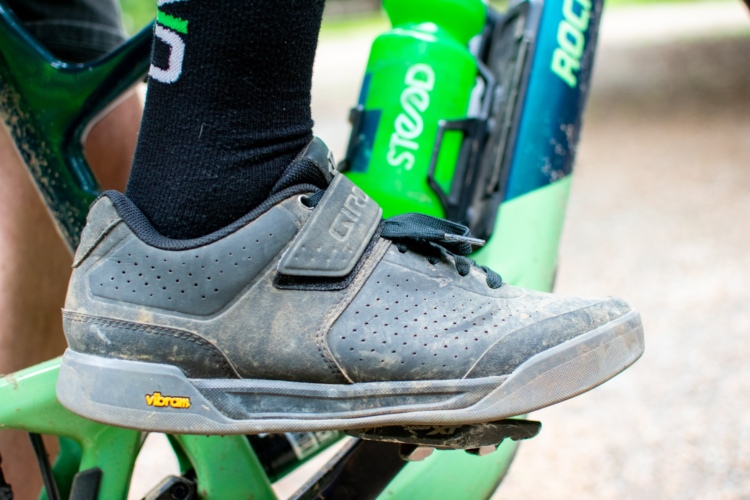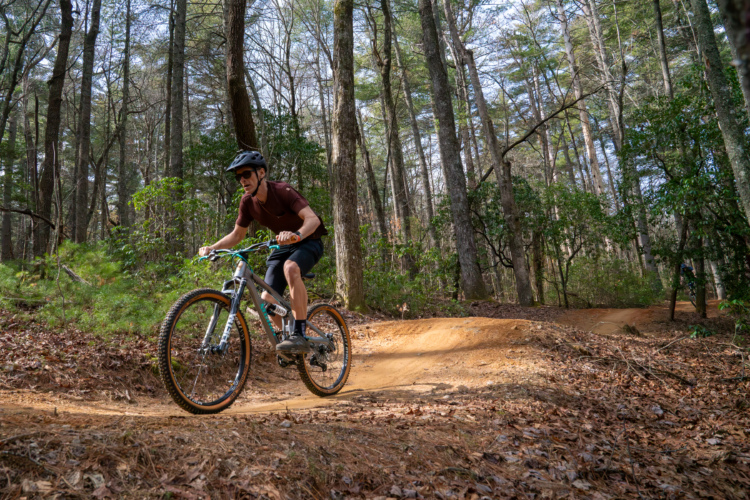
“Want to try fat biking?” my friend Katy asked. I immediately texted back, “Yes!”
Days later Katy had borrowed a fat bike for me from a friend and was driving us up a mountain in a pelting snowstorm. By the time we got to the trailhead, at least one car was already frantically spinning its wheels in rapidly deepening powdery snow, trying to escape the parking lot. The stoke was high.
As directed, I wore bread bags in my shoes to keep my feet dry and had multiple layer choices in my pack. We unloaded the bikes and started to pedal up the hill. The snow was so deep I would periodically hit points where I couldn’t keep the pedals turning fast enough, and the bike would slowly tip over and dump me sputtering and laughing into the snow. We dropped our tire pressure for some extra traction and pedaled on, wind buffeting our faces with particularly icy snowflakes. The forest was a winter wonderland complete with peekaboo views of the surrounding mountains through the storm. Eventually we reached a point where we were ready to head back downhill, whooping and sliding–and sometimes STILL having to pedal. But what a blast. I was hooked.
I came inside glowing after that ride. My husband promptly bought me a fat bike for Valentine’s Day. Yes, he is the best.
I quickly realized that fat biking comes with its own challenges. I have a Diamondback El Oso, and it is HEAVY. It didn’t fit on our existing hitch rack, and I was NOT going to buy another one. So I dug my ancient trunk rack out of the garage, tied the fat bike on (since the straps wouldn’t fit its large frame), and headed to the closest trailhead.
In hindsight, *maybe* our local hill, covered in several inches of fresh powder over compacted snow mixed with ice, was not the best place to take my beloved new fat bike on its inaugural ride. Things started out well enough as I pedaled through the beautiful frosted trees. I slid out on a few climbs but letting some air out of my tires gave me more traction and I was starting to feel like I had this fat biking thing under control. I turned onto my favorite descent on the hill, ready for some fun rollercoaster goodness. Spoiler alert, I was NOT ready.
I slid out on the outslope. I slid out on the inslope. I spun out on short punchy uphills and fell on my side, sliding off the trail down the hillside. I tried to get back up the hill but my bike shoes had zero purchase so I fell again and slid even farther down, arms and legs swimming frantically against the snow. I gave up on that trail and tried to ride straight down the disc golf course line. I hit a sneaker rut hidden beneath the snow and flew into another hillside. There was more of this ride than I would like to admit where I was just taking my bike on a companionable walk through the forest. I realized I needed to adjust my expectations a bit.
As I continued to take the El Oso out, I realized that day to day the snow added a different layer to a trail’s difficulty. Literally. Groomed snow really is much easier and faster to ride. But I could also keep an eye on social media to see where someone had just ridden and then go ride their already packed down track. And fat biking at night with the snow sparkling in the moonlight and a million stars blinking above you? GORGEOUS.
So, is getting a fat bike worth it? Isn’t that a lot of money for a bike and gear you’ll only use a couple months a year? This is my third Pacific Northwest winter with El Oso, and I will say that for me it is definitely worth it.
Not enough snow on the mountain for your skis or snowshoes? No problem, hit a trail close to home.
Want to get out before or after work on a weekday? Even a typically less interesting flat trail can become beautiful in the snow.
Need a calmer season after a year of sending? Meander through the woods and enjoy the quiet.
Want a challenge? Add some extra difficulty to a familiar trail and send it with some soft snow cushion if you fall.
Also, you can ride fat bikes in other conditions besides snow. When my kids were smaller, I would even pull them in a trailer behind the fat bike on paved trails. I haven’t been able to take my fat bike to the beach yet, but I’ve heard pedaling along the edge of the ocean is pretty incredible.
I have read and enjoyed a fair amount of stories about epic training rides and 30-50 mile fat bike races in the freezing cold, but I would like to finish this up by giving you an idea of what fat biking can look like as part of your day to day. Obviously, there are days when the trail is groomed and the weather is perfect. You have a nice ride, take a picture of your beloved steed in the snow, and go on about your day. Some days are harder, but I would argue a good adventure is always worth it.
A few mornings ago I glanced doubtfully out the window into the icy gloom. The thermometer said 17° Fahrenheit. I considered just staying home but I had already pulled on all the clothing that I had laid out the night before. I carried my big heavy bike down the stairs, mumbling and grumbling and fighting with the screen door. My 6-year-old woke up early and was eating his breakfast, eyes wide at my uncharacteristic grumpiness.
I scraped the car windows and battled with getting the fat bike onto the rack and tying it down with cold fingers clumsy in my gloves. It was so blasted cold. What the heck was I doing? Adding in windchill, this was going to suck.
I drove through the fog until I pulled off at the trailhead. I stepped out of the car and it was so cold my teeth hurt. I was wearing three layers but I realized immediately that I had under packed. I sighed. Well, I was out here so I should get to it.
I pedaled down a snowless gravel track into the foggy and frozen grassland. It wasn’t the most scenic of mornings but I was already cheering up with some fresh air. A pair of eagles had staked out the fenceline by the small irrigation ditch, each perched regally on their own tall fencepost, eyeing me as I rode by. Once I turned down the line of three willows, leafless and frosted in the mist, the fenceline was claimed by large hawks and falcons. Throughout the ride I would see them swooping past, silent wings floating low over the frozen grass. Perhaps in part because of all the predators on the prowl, the wetlands were very quiet.
I turned off the gravel path onto the snow along the edge of a frozen pond, a layer of ice crunching and crackling beneath my tires. A pair of coyotes that had been drinking at the water’s edge turned to look my way. I often meet coyotes slinking into the grass on my adventures, but these seemed much bigger than normal. Bolder. Maybe they were fat with winter fur and an abundance of easy prey, but it seemed like I followed them along the shore toward the hidden mountains, frozen water on one side, frosted grass on the left, until the pair loped off into the gloom and disappeared.
I pedaled on, back into the realm of hawks and eagles, hillocks of grass soft beneath the snow, making for slow going. I would probably not enjoy this trail much on a sunny spring day but there was magic to it in the snow, even with my toes aching and my legs pricked with pins and needles from the cold. Occasionally I passed a trail marker to reassure me that I was in fact on a trail and not on a rogue adventure through some farmer’s field. Eventually the sky lightened, the sun a faint circle of light behind the shifting gray wall of cloud.
Afterward, I analyzed and cataloged what had worked well and what I needed to bring next time; winter booties (what box had I put those in?), warmer tights, a buff for my neck. That was not necessarily a “fun” adventure, but it was definitely a good one.
All-around incredible mountain athlete Kilian Jornet was once asked which of his many mountain sports is his favorite. To paraphrase (since I can’t find the original quote) he said that he just loves to be in the mountains. He doesn’t love one sport more than the other, since they each provide a very different experience. He explained that he uses the mode of travel that is the best way to get to the beautiful place where he wants to go.
If you were to ask me which sport is more fun: mountain biking or fat biking, I’d have to say that smashing over rocks and swooping along hero dirt singletrack is much higher on my fun meter than slogging through a grassy field in the snow wishing I’d brought my booties. However, the adventures I have on my fat bike have a magic I have yet to find with a different mode of transportation.
So, what have you got to lose, besides $800 and feeling in your toes?








